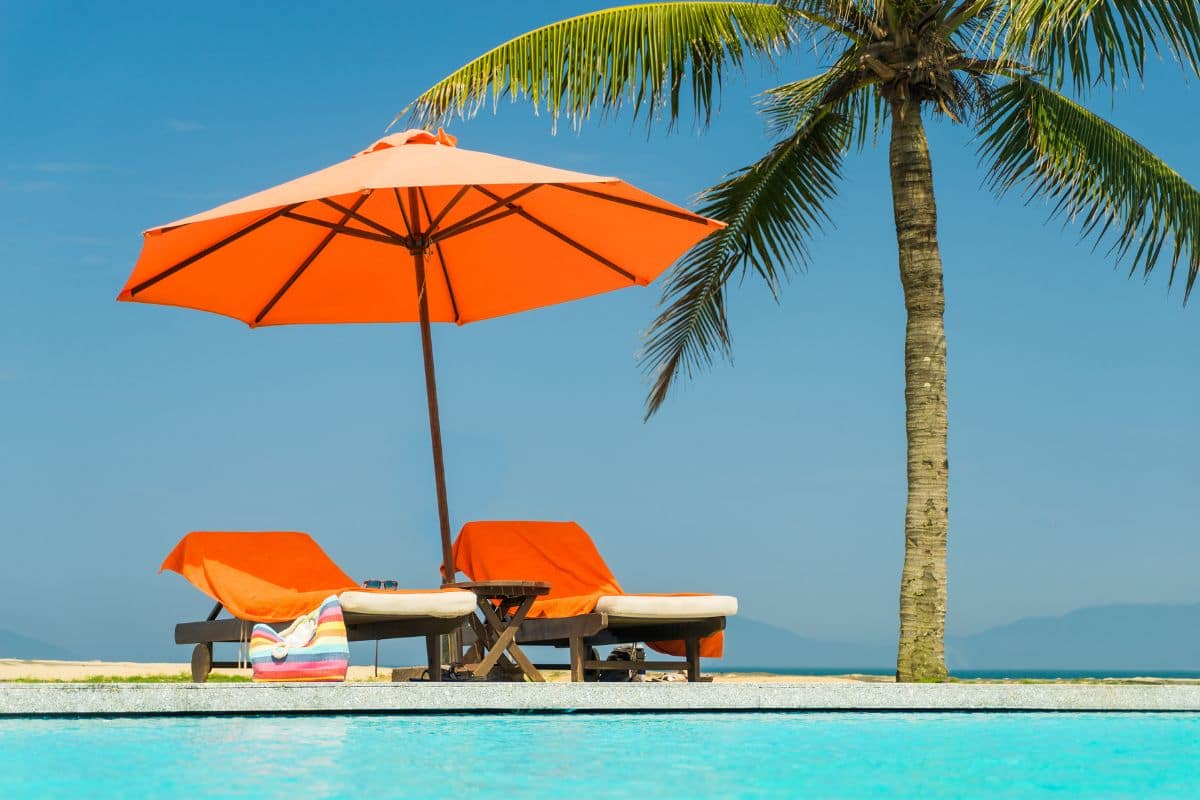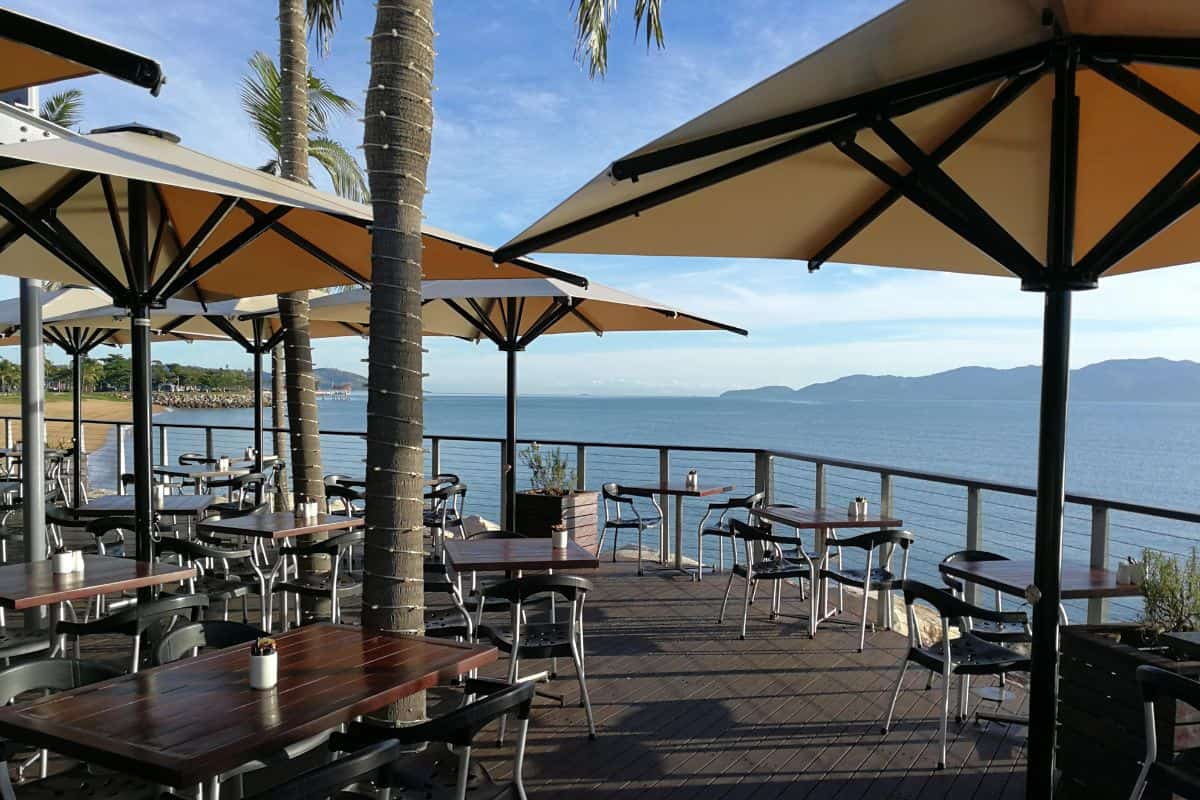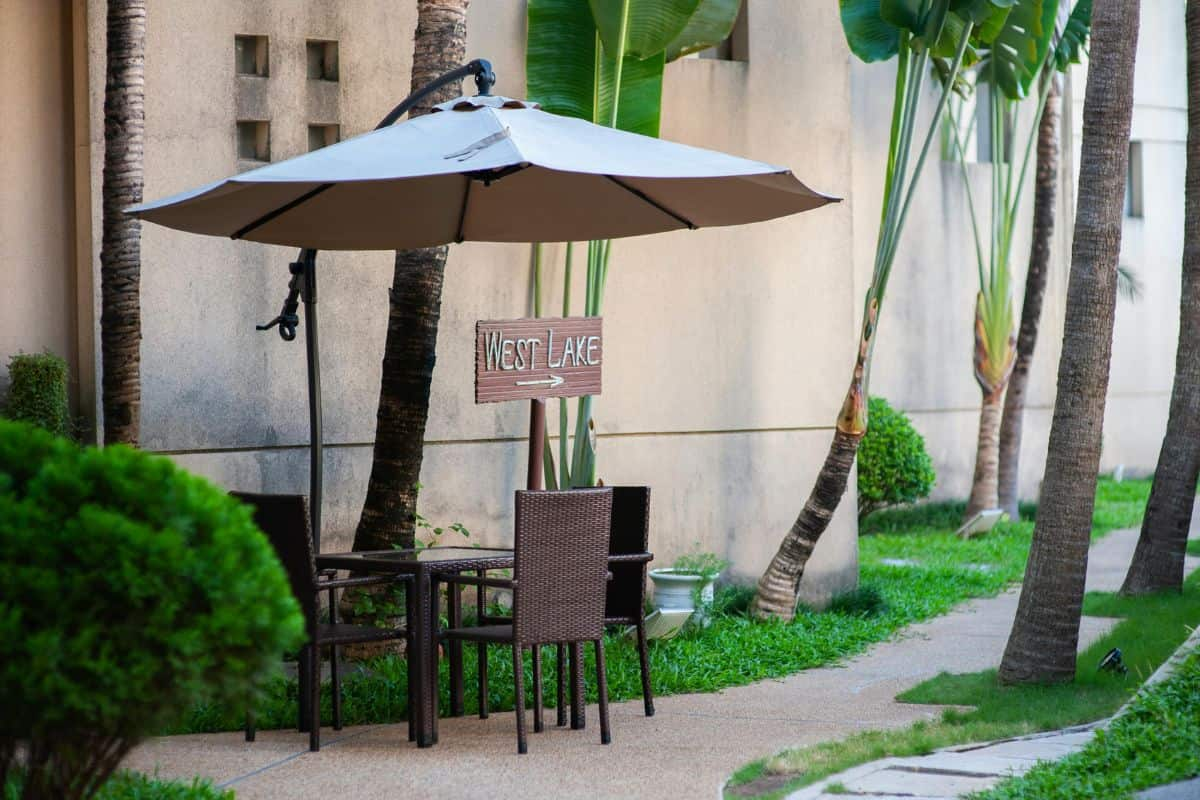



In a climate as sunny as the Canary Islands, having a parasol for your garden or terrace is essential for enjoying the outdoors for as long as possible. Parasols are also a must for bar and restaurant terraces, allowing you to enjoy the archipelago’s cuisine even when the sun is beating down.
However, before choosing a model for your home or business, you should consider the different types of parasols available and which is most appropriate in each case. Find out below!
Tabla de contenidos
ToggleFirstly, parasols must be classified according to their intended use, as some models are more suitable for private gardens, while others are mainly used in the hospitality industry.
A garden or patio parasol is a medium-sized model, between two and three metres in diameter, designed to withstand outdoor conditions. Both its structure and the fabric of the cover are resistant to sun and rain, and allow the parasol to be deployed even on moderately windy days.
They usually come with a base that keeps them in place and prevents them from blowing away, although some models of parasols have bases with wheels that make them easier to move around.
Hospitality parasols are designed to cover larger areas in bars, restaurants and cafés. Therefore, their minimum size is usually three metres in diameter and they are designed to withstand the intensive use typical of these establishments.
This type of umbrella for bars must also be used with a solid and stable base, which is usually heavier than in the case of garden umbrellas. In addition, their design seeks to combine functionality and aesthetics to enhance the customer experience.

Beach umbrellas are lightweight models designed to be portable, prioritising ease of assembly and disassembly. They are smaller than garden parasols and do not usually have a base, but are stuck into the sand so that they do not move.
Their main function is to provide protection from the sun during outdoor activities, mainly at the beach or pool, which is why we do not sell this type of model at Home Zentrum, as we specialise in outdoor furniture for homes and businesses.
Finally, handheld parasols are compact, portable models for individual use, which are used to provide protection from the sun or rain on short journeys. For this reason, their structure is flexible and lightweight, but also less resistant.
Again, at Home Zentrum we do not sell these types of parasols.
Below, we will look at different types of parasols for gardens or hospitality establishments according to their structure.
This is a type of parasol with a pole or mast in the centre. It is the most classic structure, allowing for a more balanced weight distribution and is perfect for placing over a couple of sun loungers.
In fact, this design is the easiest to find on the market, and it is also usually the most economical. Although the central pole may limit the space under the umbrella, its stability makes it the most common choice for domestic and commercial use.



On the other hand, side-arm parasols, also known as offset parasols, have their pole at one end, freeing up space under the canopy. This makes them perfect for placing over a dining table or relaxation area.
However, they need a heavier base to ensure stability due to the displaced weight of the pole, so they tend to be slightly more expensive.
These types of parasols can have either a central or side pole, but their main feature is that they allow you to adjust the angle of the canopy to protect yourself from the sun throughout the day.
In this sense, they are a versatile and modern option, very common in domestic use, although the tilting mechanism slightly increases the price.
Most of the garden umbrella models we have mentioned are used in conjunction with a concrete or fillable base to ensure their stability. However, there are also models with integrated or recessed bases in the pavement, which provide much greater stability even in strong winds.
These types of parasols are mainly used in the hospitality industry, where they are usually fixed to tables and chairs, thus preventing possible movement or falls caused by the movement of employees and customers.
There are also different types of parasols depending on the shape of the cover or canopy, mainly distinguishing between:
Firstly, round parasols are the most traditional, thanks to their shape, which distributes shade evenly. Although this is a very versatile design for gardens and terraces of any size, they are rarely used today due to their excessive simplicity.
Rectangular or square parasols are commonly used in the hospitality industry and in large gardens, bringing a modern and geometric style to the environment. This shape allows you to make the most of the space and cover large areas without leaving gaps, but it only works in spaces that are large enough.
The most popular parasol shapes today are undoubtedly octagonal and hexagonal, offering a contemporary, elaborate and elegant aesthetic. They are perfect for those looking for a decorative yet functional touch in private gardens or businesses, allowing for a more balanced distribution of wind and increasing the stability of the parasol.

Finally, let’s look at the different types of parasols based on the materials they are made from.
Almost all types of patio parasols have aluminium frames, as this material is lightweight, corrosion-resistant and easy to maintain, making it ideal for humid areas or those close to the sea.
In addition, aluminium blends in very well with modern and elegant designs, adding an extra aesthetic touch, and thanks to its lightness, it is easy to transport and assemble. That is why at Home Zentrum we use this material for the structure of our parasols.
It is true that we can also find frames made of wood, a natural and elegant material that fits well with classic or rustic style terraces. However, wood requires a lot of maintenance to prevent it from deteriorating due to humidity or sunlight, as well as being heavier than aluminium and therefore offering less mobility.
Finally, some types of parasols have plastic structures, especially beach or handheld models. Although this material can be useful for portable parasols, it is not suitable for garden or hospitality models, as its durability is limited when exposed to prolonged sunlight.
When it comes to the material used for the canopy or cover of a parasol, polyester is the most commonly used fabric due to its strength, lightness and ability to block UV rays, and in fact it is the fabric we use for our parasols.
It also requires very little maintenance, making it much easier to clean the parasol, and generally offers excellent value for money. However, it is important to pay attention to the weight of the fabric, which must be adequate to ensure its durability.
Finally, here are a few tips to help you decide what kind of parasol to buy based on your needs:



